Cordoba is the perfect city to explore on foot as it’s not too big a city and has a lot of highlights which are just a stone's throw away from each other. This Andalusian pearl has a lot to offer when it comes to history, art and culture. Let us take you on a guided tour through Cordoba with our three themed walking routes!
Walking Route 1: Historical
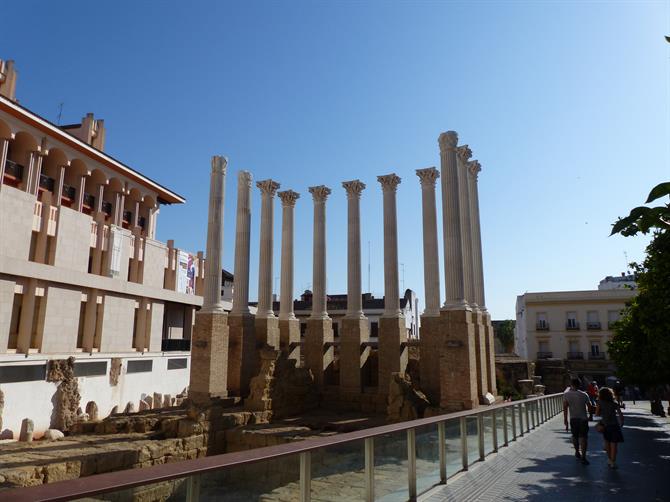
As far as history goes not a lot of cities have more to offer than Cordoba. The Romans, Jews, Muslims and Christians all left their mark on the city and this clearly shows in the local historical highlights. Prepare yourself for an interesting journey through historical Cordoba!
General Route
San Nicolas Church - Christ of the Lanterns - Palace of La Merced - the Malmuerta Tower - the Santa Marina Church - Viana Palace - San Lorenzo Church - San Pablo Church - Roman Temple - San Francisco Church - Calahorra Tower - Roman Bridge - Gate of the Bridge - Mosque-Cathedral - Alcazar of the Christian Monarchs - Royal Stables - Maimonides Statue - Synagogue - Zoco Market - Chapel of San Bartolome - Cardinal Salazar Hospital - Almodovar Gate - Minaret of San Juan
Time To Allow: 3-5 hours
The estimated time depends on whether you decide to spend some time inside the churches, palaces and other attractions. Note that some of the places on this list have certain opening hours. For more information, please take a look at the opening times of the main sights in Cordoba.
Best time to do it
It’s hard to find a better view in Spain than that of Cordoba’s Roman Bridge with the beautiful light of the setting sun. So with that in mind, we would advise you to explore this route during the late afternoon or early evening when the sun is slowly starting to set in spring or autumn. If you visit Cordoba in the summertime, it's best to walk this route in the early morning to avoid the extreme heat.
You will see...
Remains of the different cultures of Cordoba throughout history, such as the Roman Bridge, the Mosque-Cathedral and the Synagogue. At the end of this route you will have seen all the main historical highlights of Cordoba.
Did you know?
- The Mosque-Cathedral of Cordoba has always played a symbolic yet crucial role in the rivalry between the Moors and the Christians. When the Moors invaded the town of Santiago de Compostela the then warlord leader Al-Mansur ordered to take the church bells of the cathedral to Cordoba to have them melted to make lamps for the Mosque. In turn, when the Christian King Ferdinand III and his men retook Cordoba he ordered to take the lamps and have them melted to make new bells for the cathedral of Santiago de Compostela.
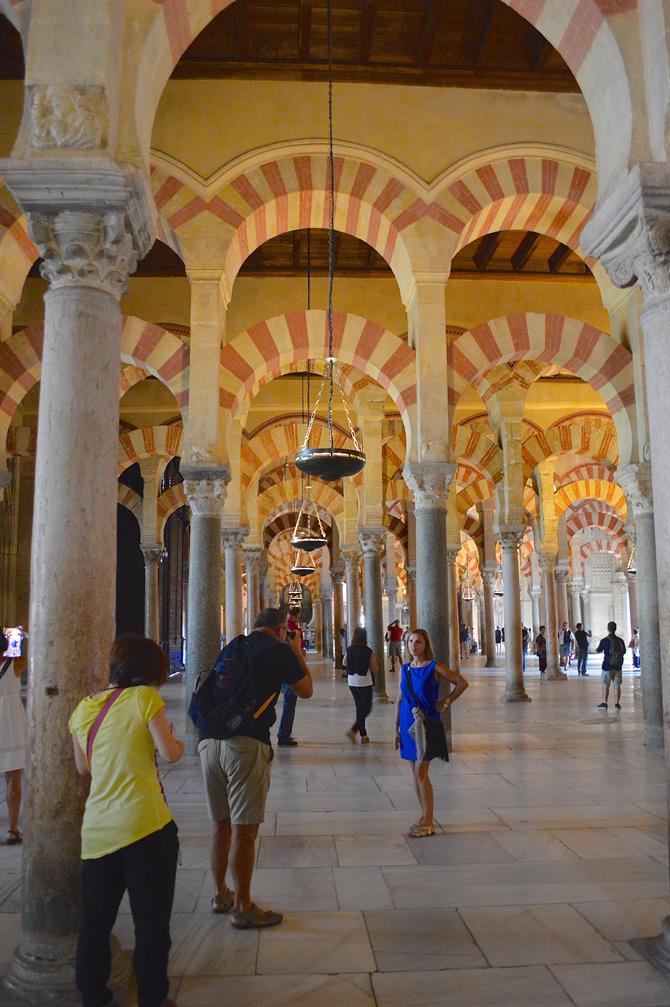
Walking Route 2: Culture
In Cordoba you will find plenty of monuments and attractions which are of great historical and cultural value. It's a good idea to enrich your visit to museums and point of interest with some activities that can help you get to know the ancient traditions and the spirit of the city. After a visit to the Mezquita or the spectacular gardens of the Alcazar, there is nothing better than going down the street and mixing with people, have a drink on a terrace and enjoying the colours of the river at sunset, taste some salmorejo (Cordoba's version of the famous gazpacho), or relax with a visit to an Arab bath.
General Route
Santa Marina Church - Barrio de San Basilio - Plaza de Corredera - Judería - Mezquita area - Visiting the Alcazar - Enjoy Salmorejo at Salmoreteca (Mercado de la Victoria) - Enjoy a coffee next to the river (Ribera) - Watch the sunset from Ribera rooftops next to the Guadalquivir - Enjoy a bath and a cup of tea at the Hamman - Roman Bridge - Visit the Palacio de Viana and Patios de Córdoba
Time To Allow: 5-6 hours
If you wish to dedicate some time to take pictures and enjoy the atmosphere of the historical centre while sitting in a terrace, tasting some tapas with a glass of wine, you may want to split the route over a couple of days.
Best time to do it?
Following this route you'll probably spend most of your time walking through the city centre, so spring and autumn are the best periods. Some of the suggested attractions (Alcazar, Mezquita, Palacio de Viana, etc.) have opening hours that may vary according to the season. Check them in advance by clicking the link above.
You will see...
With this route, you'll discover the most important monuments and places of interest in the city and the basic starting points to get to know its ancient and unique roots. For centuries, Cordoba has been home to three different peoples and cultures: the Christian, the Muslim and the Jewish-Sephardic. From this coexistence, a unique cultural environment arose, whose heritage can still be traced back today in the local traditions and city's monuments.
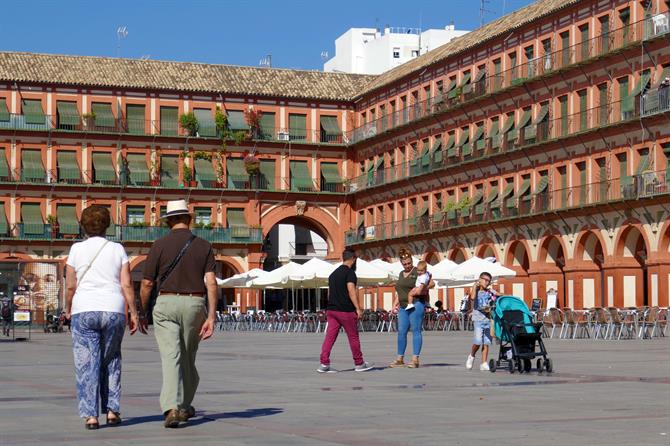
Did you know?
- Plaza de Corredera - The city's most central and wide square. Under its arcades you will find bars, antique shops and even a food market, perfect to discover typical local products. The square is often used for events, concerts or performances of music, theater and street art. In the past, the Plaza de la Corredera was used as plaza de toros, and even as a scenario for public executions.
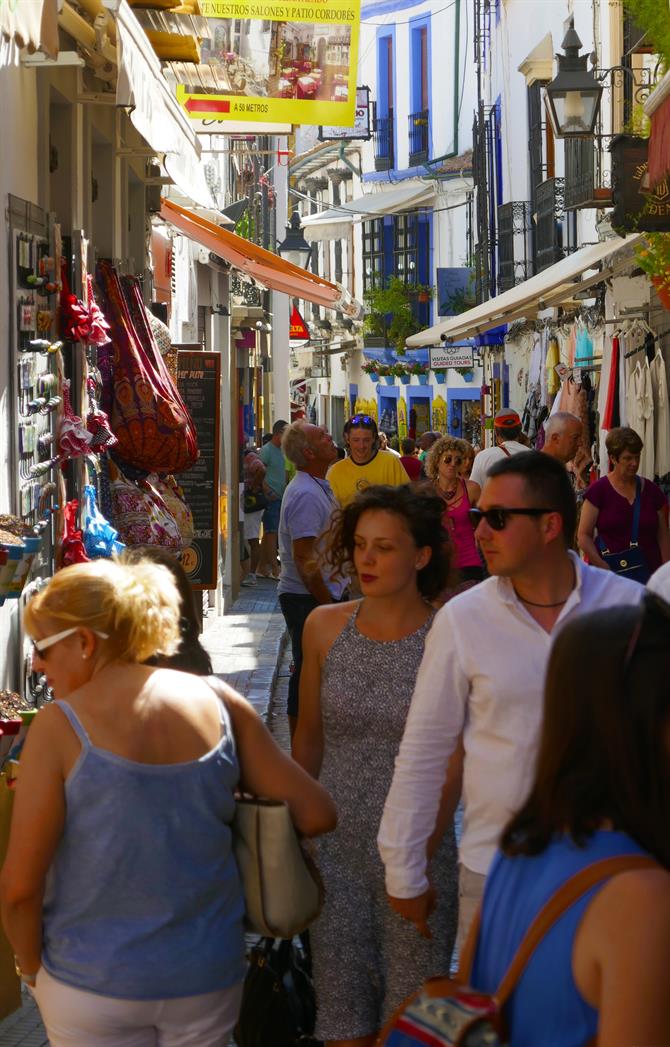
- Judería - One of the oldest and most fascinating neighbourhoods in the city, the Juderia was built during the Roman period, expanded under Muslim domination (from 711) and occupied by the Jewish community in the Middle Ages until their expulsion, which was decreed by the Catholic Kings after the Reconquista. To enjoy the breathtaking atmosphere of this ancient neighbourhood while visiting its numerous museums and historical buildings, don't forget to take a break in the nearby Taberna Guzman for a glass of fine local wine.
Walking Route 3: Squares
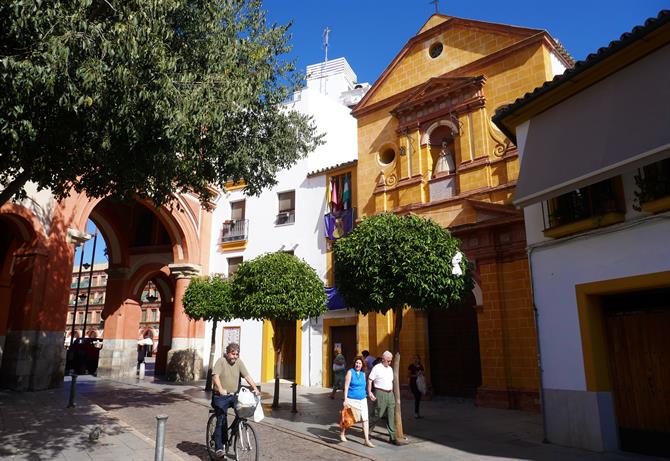
The “Squares” route will take visitors through some of the most fascinating plazas of the city, many of which have great historical and cultural value. If you want to discover hidden and picturesque corners and breathe the atmosphere that gives Cordoba's historical centre its lively character, follow us!
General Route
Plaza de la Corredera - Plaza Tendillas - Plaza de la Compañia - Plaza de San Juan - Plaza de la Trinidad - Plaza Angel de Torres - Plaza del Cardenal Salzar - Plaza de Maimónides - Plaza Agrupacion de Cofradias - Plaza del Triunfo de San Rafael/Canonigo Torres Molina - Plaza de Abades - Plaza del Potro - Plaza San Francisco - Plaza de San Pedro - Plaza de Aguayos - Plaza Vizconde de Miranda - Plaza de San Bartolomé - Plaza de las Tazas - Plaza de Orive - Plaza San Andres - Plaza San Lorenzo - Plaza San Rafael - Plaza de San Augustin - Plaza don Gome - Plaza de Santa Marina - Plaza de Capuchinos - Plaza del Socorro
Time To Allow: 6-7 hours for the entire route
Keep in mind that this route is circular, so you can start it wherever is most convenient for you. If you are coming from the train station, for example, you may prefer to start it at the Plaza de la Tendillas or Plaza de Capuchinos (see map above).
Best time to do it
Spring and autumn are the best periods. During summer, and especially during the central hours of the day, the temperature can be very high. To get the real vibe and atmosphere, it is a good idea to avoid the early morning or the central hours of the day, when the streets are virtually empty of people and activities. If you plan to take pictures, consider the possibility of doing the route during the afternoon, to get the most out of your camera with pre-sunset light.
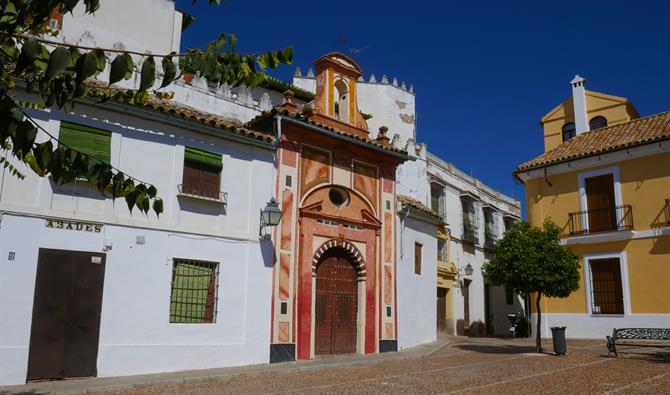
You will see...
Some incredible hidden treasures. The city’s historical centre is dotted with dozens of fascinating squares, some very small and easily missed. All of them have their own stories and secrets, often related to the episodes of the rich history or traditions of Cordoba.
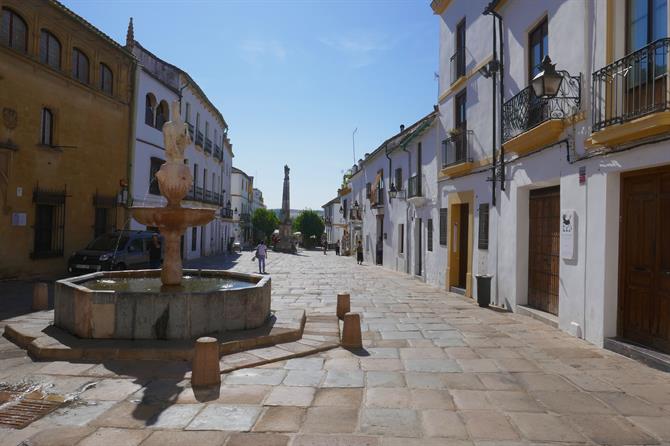
Did you know?
- Plaza del Potro - It has its name for the statue that decorates the fountain located at one of its extremes, depicting a young horse ("potro", in Spanish). In the past, the square was the centre of the city's handicraft activities, as well as a space for livestock sales, as witnessed by the still existing Posada del Potro, a 15th-century inn equipped with stables, even mentioned in Cervantes’ Don Quixote. Today the Posada is home to a Flamenco centre. The squares cultural offering does not end there: overlooking the cobblestones you will find the Museo de Bellas Artes and the museum dedicated to the painter Julio Romero de Torres.

- Plaza Maimónides - Located in the middle of the Juderia neighbourhood, and also known as Plaza de Teberiades, this small square is dedicated to one of the most famous and culturally influential personalities of the thriving Medieval Cordoba: Moshe ben Maimon, known as "Maimónides", an important philosopher and astronomer who lived in the twelfth century.
